Eisenhower Matrix of Time Management
The Eisenhower matrix is still widely used today by many individuals in many groups doing many different jobs. This time management model to do this work shows its efficiency thanks to its logic and clarity, which is highly applicable in life.
So what is a time management matrix? How to use this matrix? Find out in the following content.
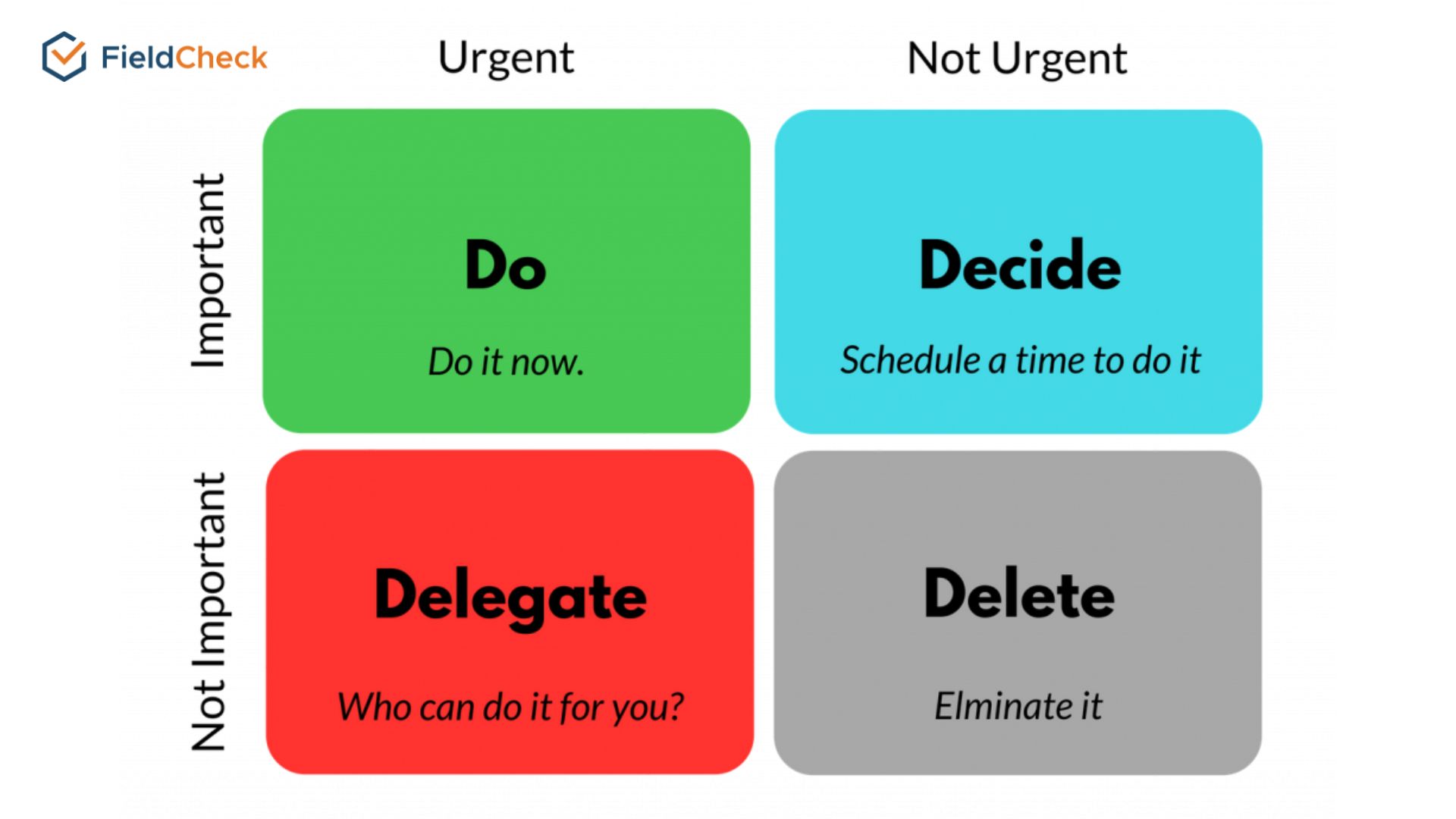
Eisenhower time management matrix
What Is The Eisenhower Time Management Matrix?
#1. Define
The Eisenhower or time management matrix is considered a method to help allocate time effectively using the criteria of importance and urgency. The method divides the to-do list into four different groups.
One of the hallmarks of this matrix is that it is suitable for people who work on goals but don't have enough time to complete them.
This matrix also helps businesses, specifically employees, not get caught up in the work cycle and forget important tasks.
Related to Eisenhower's basic content, the matrix helps arrange tasks by priority level, helping to complete the tasks according to the orientation and goals. Tasks are classified according to urgent and important criteria to manage effectiveness. For example:
- Urgent matters are handled by everyone immediately, affecting many people.
- Important things bring long-term value, helping to move closer to goals.
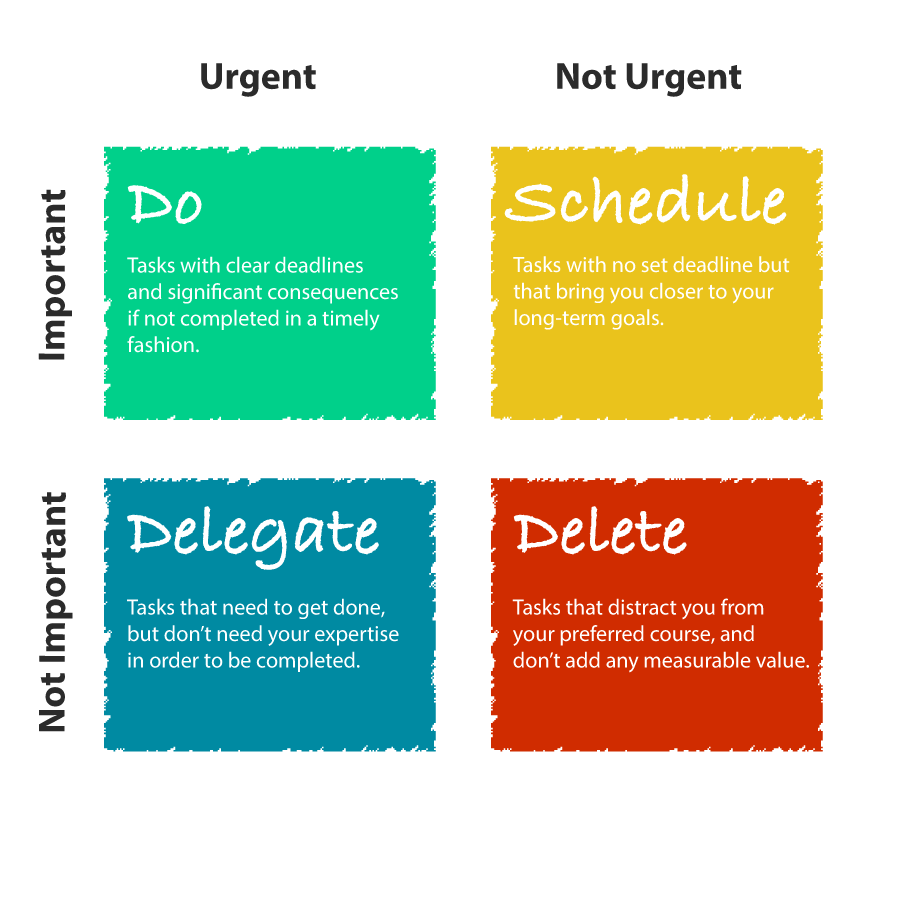
Eisenhower matrix
#2. Origin
Referring to the origin of this principle, it was invented by Dwight D. Eisenhower – the 34th president of the United States, term from 1953 to 1961. Before becoming President, he served in the US Army throughout World War II.
He had difficulty organizing and focusing on work every day. This led him to invent the Eisenhower matrix, which was very helpful in handling multiple tasks at once.
Task Groups in the Time Management Matrix
The time management matrix will include the following 4 main groups:
#1. Important and Urgent Tasks
Group 1 of the Eisenhower matrix includes important and urgent tasks. This group should be done first. Accordingly, the functions of group 1 should take up 15-20% of the time and have the following identifying signs:
- No time to postpone work
- Unexpected mission, easy to cause crisis
- Complete all leftover work
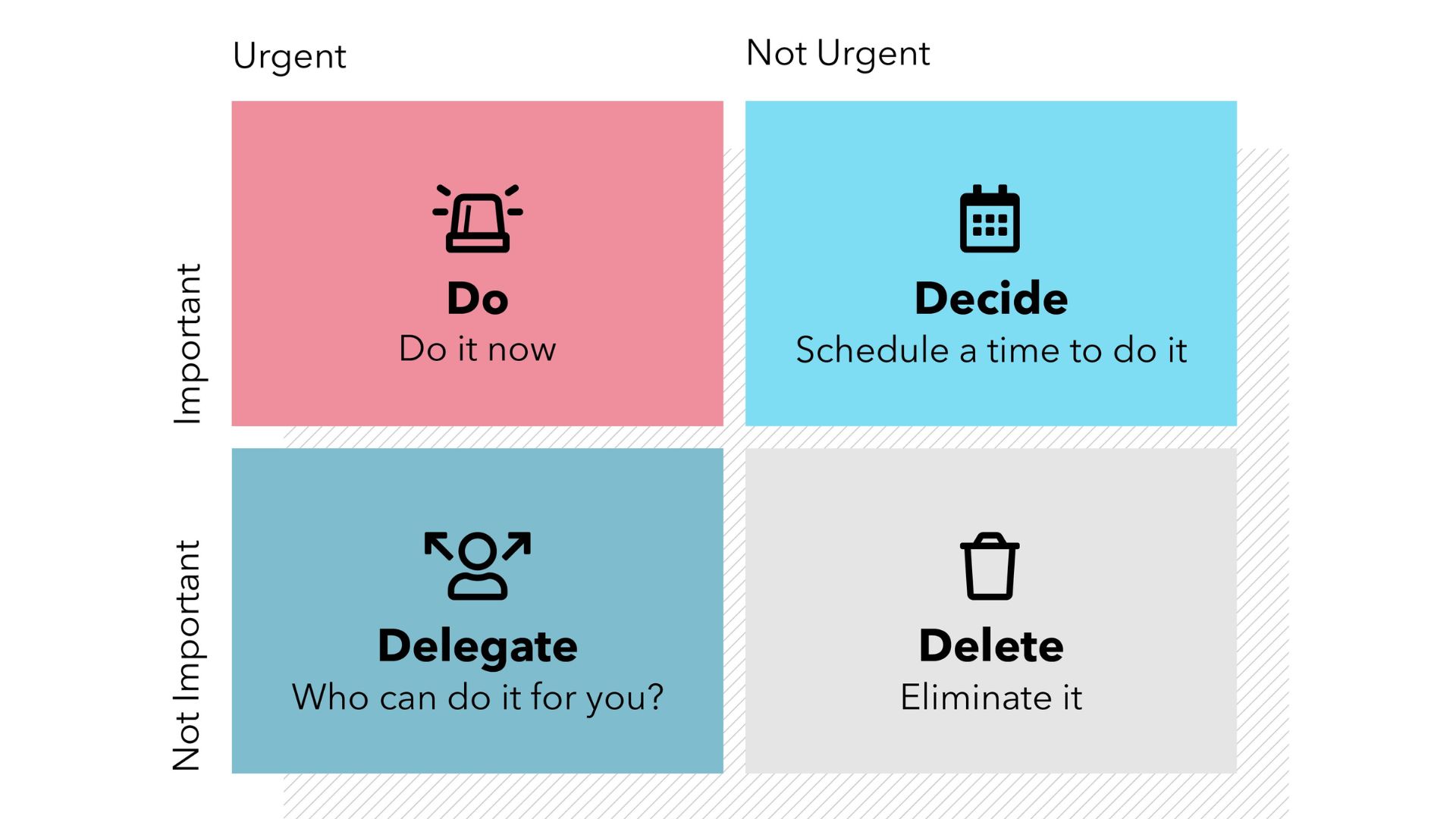
Eisenhower matrix for time management
#2. Important, Not Urgent Tasks
The important but not urgent tasks will belong to the second group of the time management matrix. This group will spend about 60-65% of the time on tasks.
To handle this group, you need to focus on your work and spend more time with this group than the other 3 groups. If a task takes longer, its importance is higher and vice versa.
#3. Unimportant, Urgent Tasks
The third group of the Eisenhower matrix includes urgent but unimportant tasks. The tasks will take about 10-15% of the time to complete. This team is required to handle tasks early and quickly.
Some manifestations of this group work include:
- Initiated from a small job.
- To be delegated by others to perform tasks that are not within their responsibilities.
- Respond to emails or conversations and short meetings.
#4. Not Important, Not Urgent Tasks
The last group of the matrix includes important but not urgent tasks. It would help if you did not spend too much time doing this group of work; only about 5% of the time should be processed.
Some non-critical and non-urgent tasks include:
- Long call
- Working without purpose
- Chatting with you
- Leisure activities
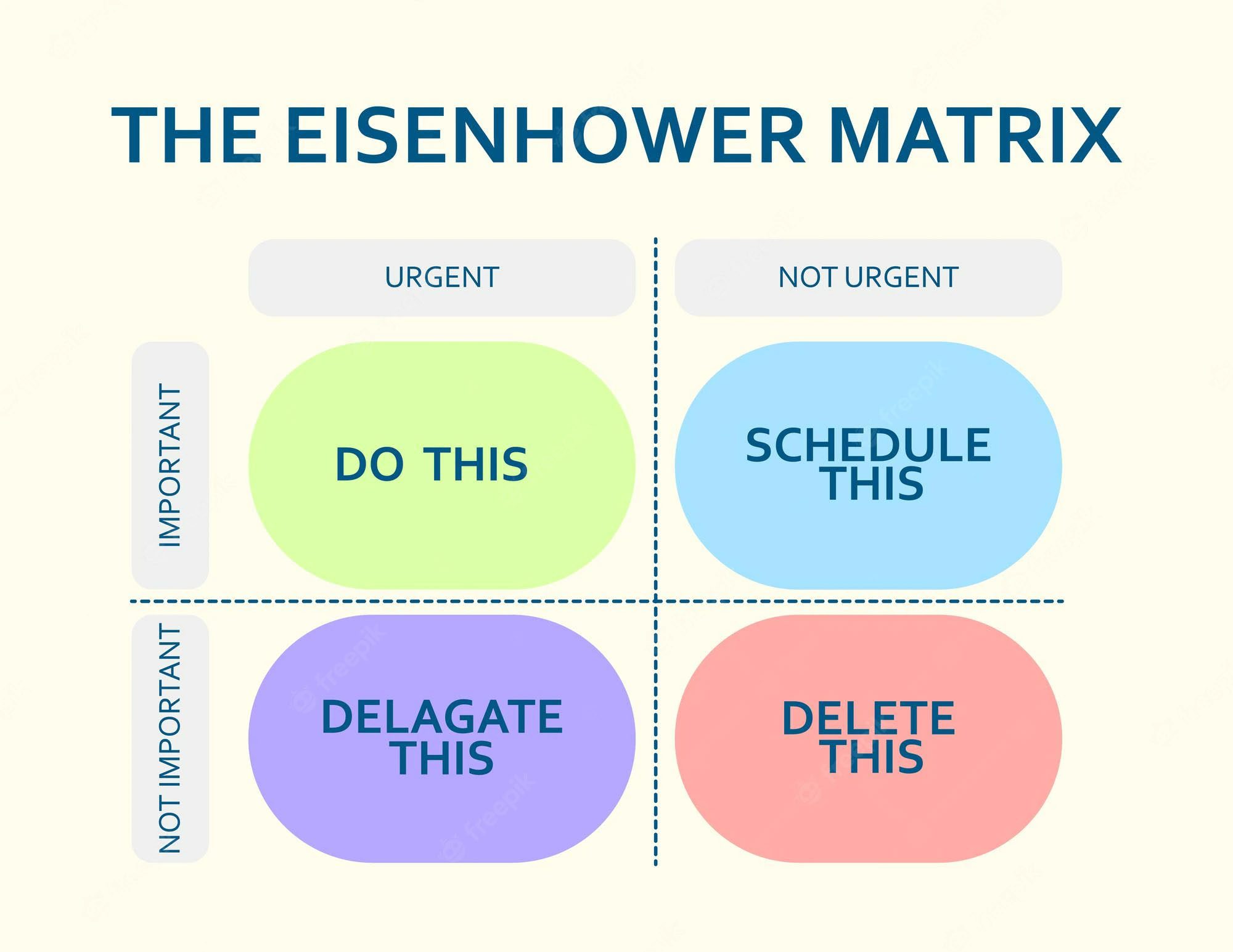
Use Eisenhower matrix to manage tasks
How Useful Is the Eisenhower Matrix?
When today's life pulls everyone into the hustle and bustle of work, making it difficult to manage and handle work effectively, this time management matrix can be considered a useful tool to help you manage time to do your job better.
By aligning the importance and urgency of the tasks that need to be done, you'll have a foundation to evaluate better, select, organize, and perform.
How to Use the Eisenhower Matrix
When using the Eisenhower time management matrix, you'll need to follow the right process to manage your time effectively.
Your matrix usage procedure can be done as follows:
Step 1: List all the tasks that need to be done completely, avoiding omitting or adding excess to the list
Step 2: Think, evaluate and arrange the work into the four groups outlined above:
- Important and urgent work
- Important, not urgent
- Unimportant, urgent work
- Not important, not urgent
Step 3: Perform the tasks according to the priority level of the groups as follows:
- Level 1: Important, urgent
- Level 2: Important, not urgent
- Level 3: Unimportant, urgent
- Level 4: Not important, not urgent
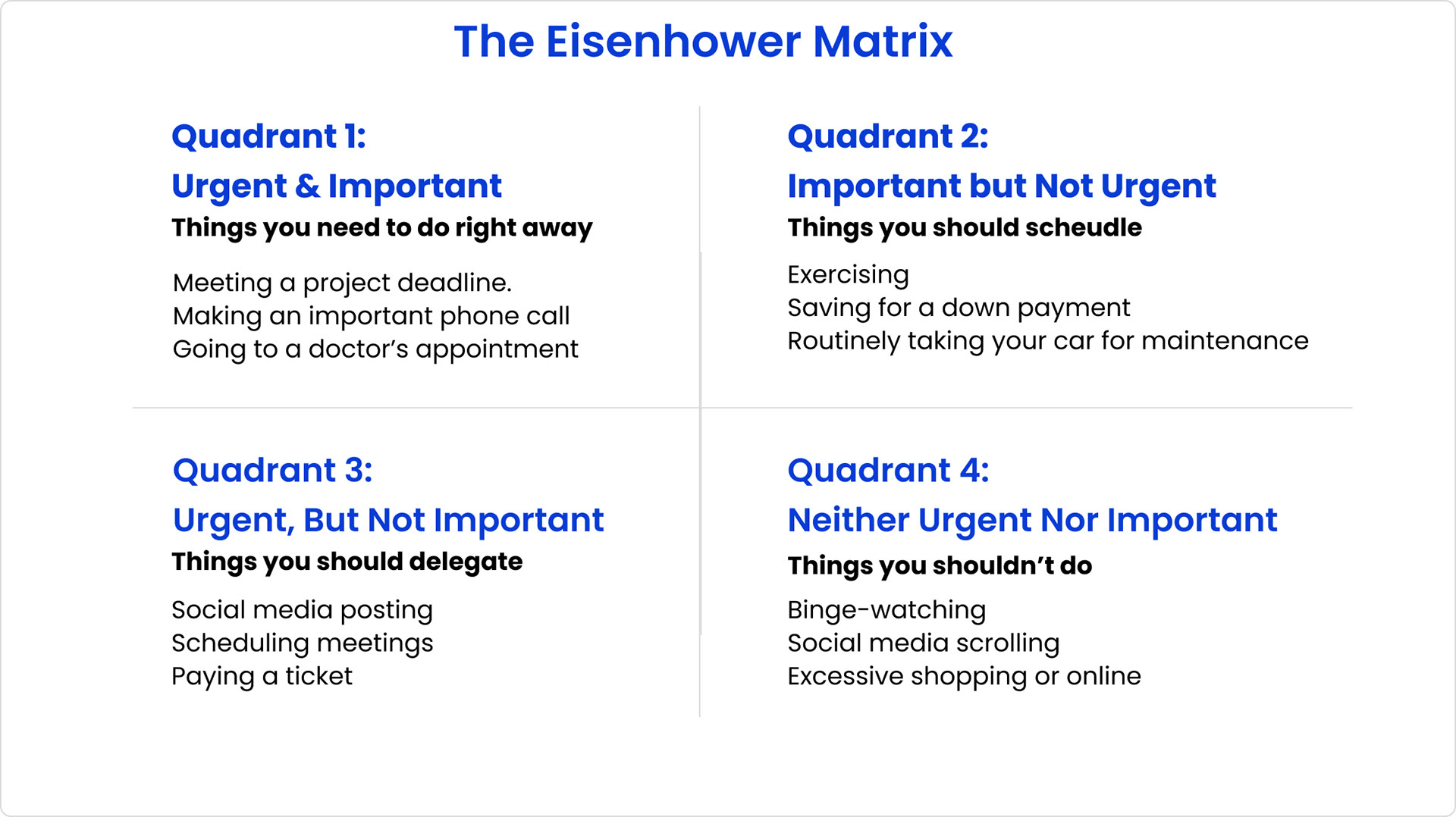
Eisenhower matrix example
5 Time Management Tips When Working with the Eisenhower Matrix
When using the Eisenhower matrix, you will need to know the following tips:
- Make a to-do list
- Ask questions about the first thing to do
- The workgroup should be limited to less than 8 jobs
- Add new tasks after completing the most important work
- Work and personal life can be used together with the matrix
- Should create management matrix by day instead of by week or month
- Focus on execution should not be influenced by external factors
- Create a to-do list the night before to relax and put your mind at ease
- Actively identify what your own needs are
Tips for Creating Your Own Time Management Matrix
When building a time management matrix, you need to keep a few points in mind:
- Need to clearly distinguish the importance and urgency of the work: You need to understand and properly appreciate the importance and urgency of your tasks to do the good division of work and best fit.
If you are confused between two criteria, it is easy to work inefficiently and easily get confused.
- Optimize tasks: You should list your jobs, remove unnecessary charges to focus on important tasks, and put them in the matrix. As a result, your workload will also be optimized.
- Have a clear purpose: You must use your time management method to the fullest by identifying a good sense when working. Otherwise, using the Eisenhower matrix will be useless and waste time and effort.
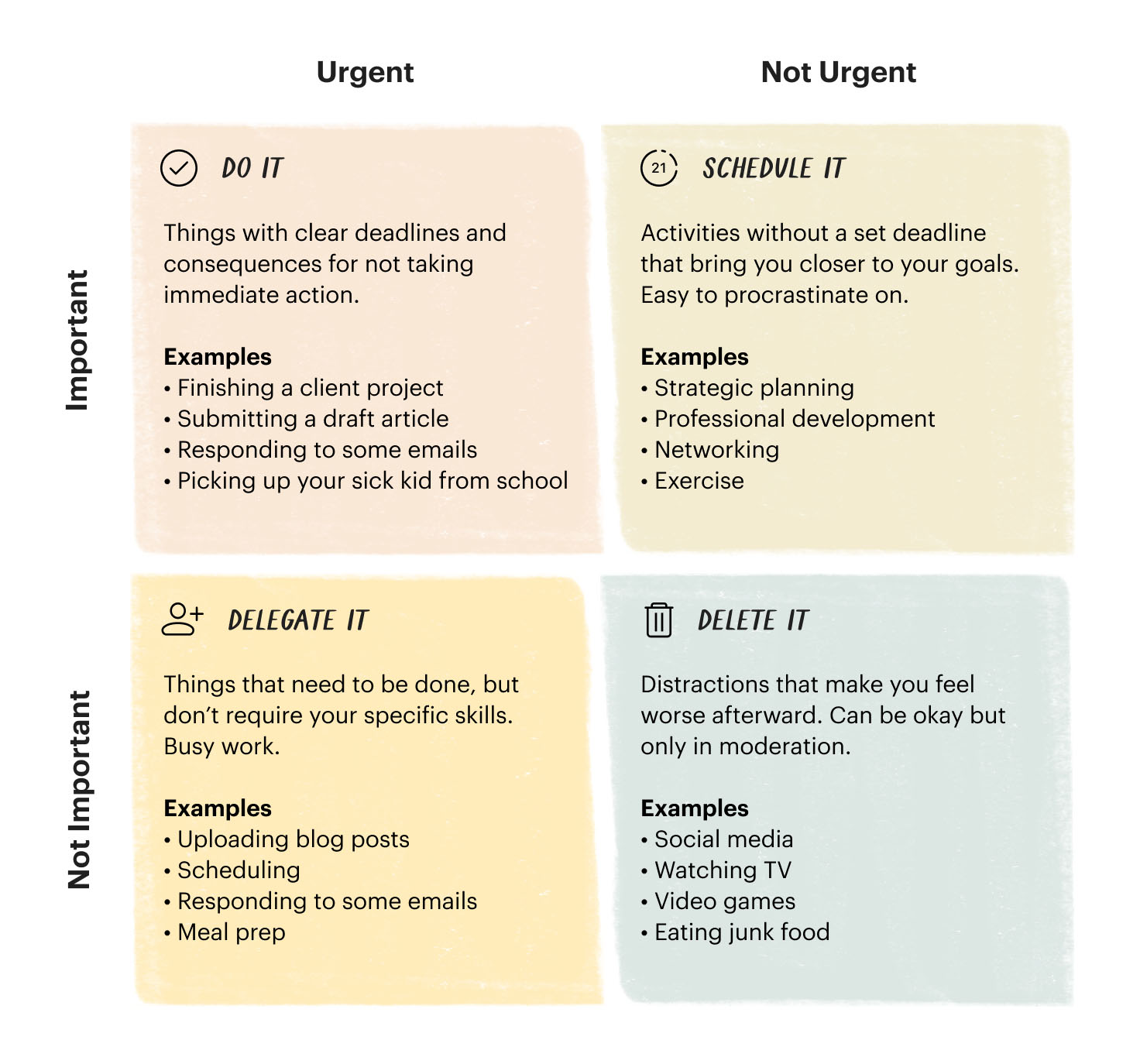
Eisenhower example
Wrapping Up
In short, the time management matrix or Eisenhower matrix is a tool to help you manage the time to perform your tasks based on the importance and urgency of the work.
Once you've properly assessed the nature of your work, you'll be able to get it done with optimal performance.
RELATED POSTS:




